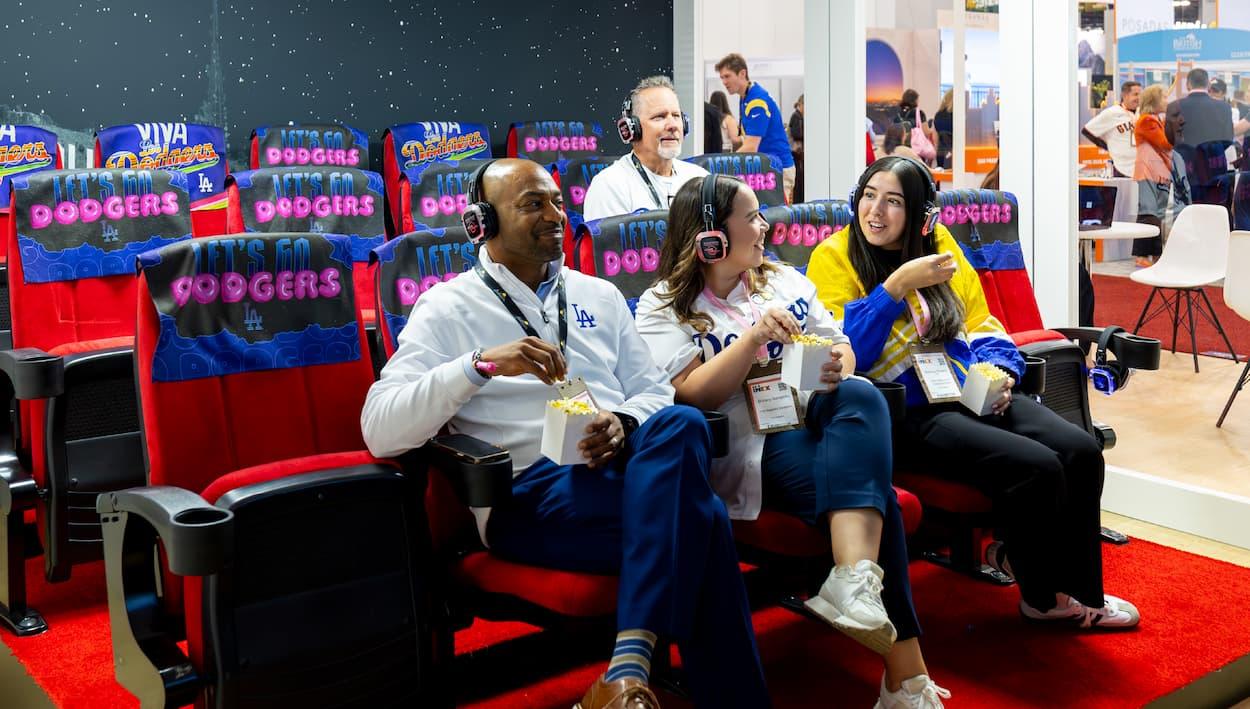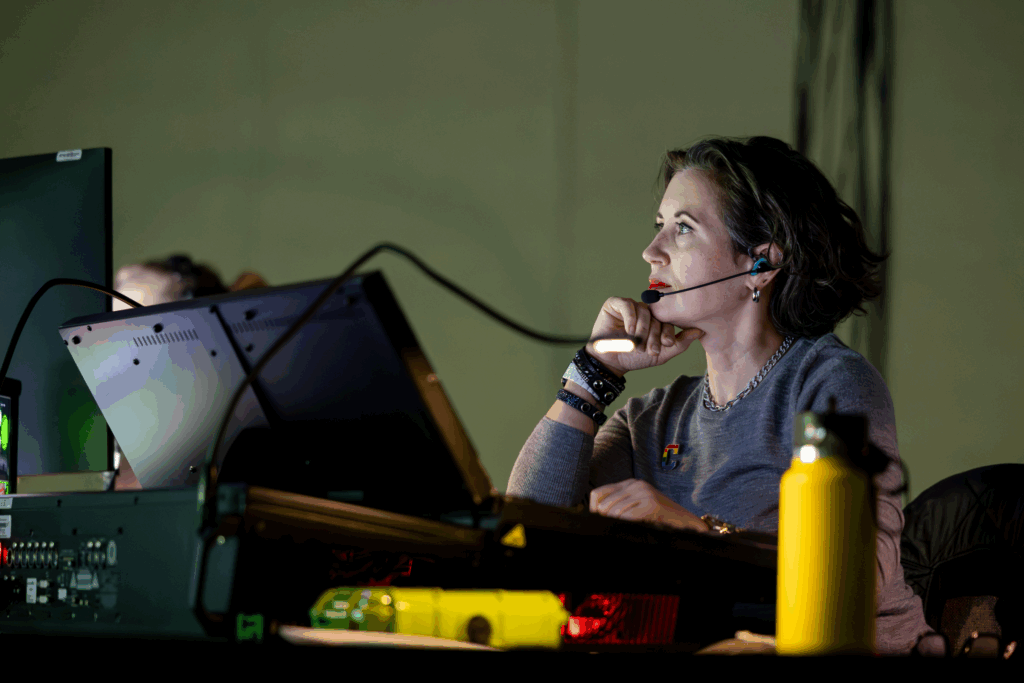
Broadcasting show-worthy events and experiences is an intricate and multifaceted process that often requires substantial planning and coordination.
That’s why it’s crucial every detail is designed and delivered, flawlessly, to support the media in an environment filled with competing elements.
But flawless execution also means these complexities remain hidden, behind the scenes.
Until now.
We’re revealing what it takes to make sure that your media center is hi-definitely ready to turn on the spotlight.
INFRASTRUCTURE
Design
The process starts with designing an experience made for both live and remote audiences. Designers have to balance what is seen in person, what the camera lens captures, and what is broadcast to living rooms, computers, and mobile devices.
Logistics
Working with a variety of networks means:
- Coordinating secure access
- Setting up check-in
- Arranging freight
- Building out workstations and broadcast sets
Ensuring equal access to the above and delivery to all networks, broadcasters, and podcasters is critical.
Power
The significant power infrastructure it takes to support broadcasting and media far exceeds most facilities’ capabilities, and power is supplemented with generators, ancillary support, and redundant backups. Because when you’re live, killing the lights is not an option!
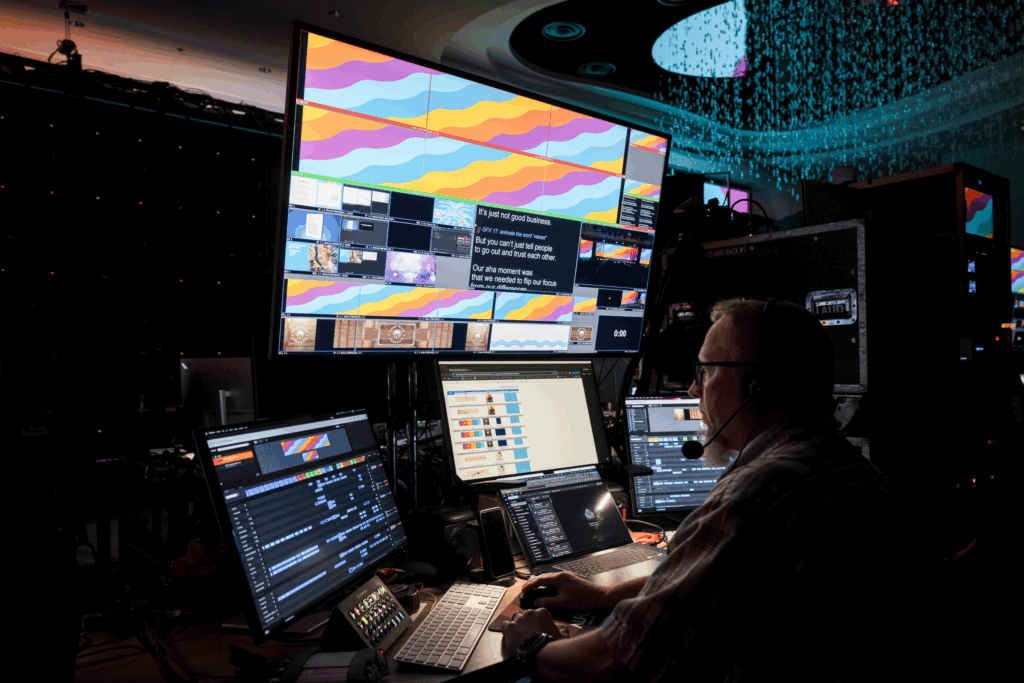
Workstations
To conduct, produce, and distribute their work, media personnel need a workstation/media center. This becomes their home base.
Building these involves smart engineering, intricate setups, and bringing together a lot of people.
Power, internet, and fiber access vary by user, and must be scrupulously managed.
Pro tip: Service kits simplify managing the various needs of media personnel during large events. These kits allow media to easily order and pay for additional services such as internet, lighting, access, and video in one fell swoop.
Security
Coordinating security measures can dictate layout and design, and are essential for crowd control as well as the safety of high-profile individuals.
Specific provisions can include working with security personnel, controlled access to press rooms, credential checks, and metal detection.
BROADCASTING
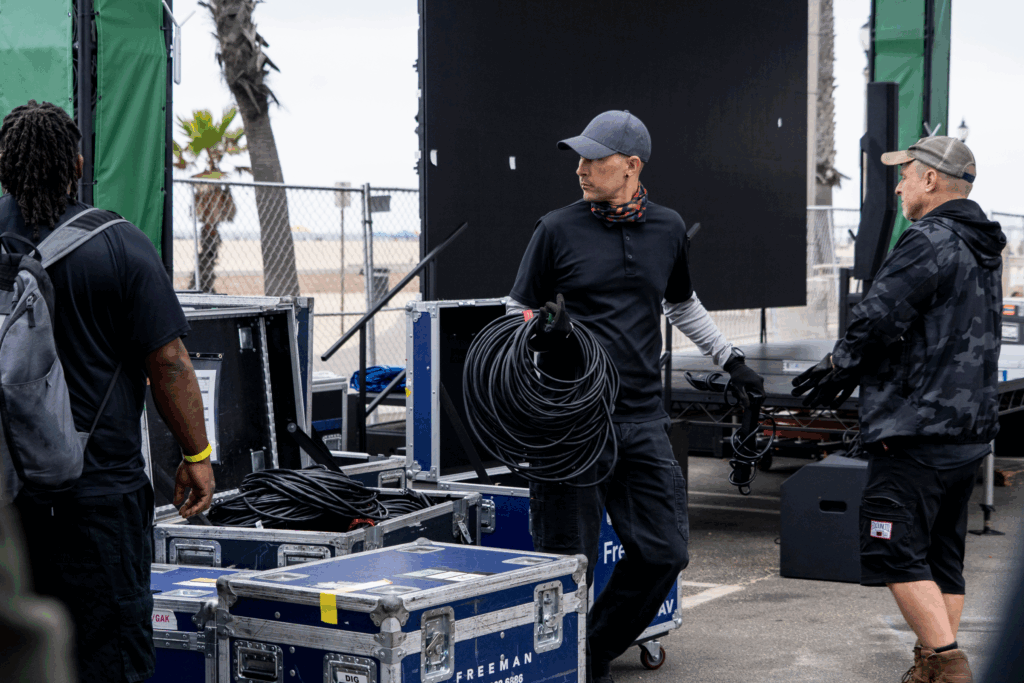
Power
Broadcasting effectively and seamlessly means ordering, distributing, and installing enough power to produce high-quality video and audio capture.
That also means powering up workstations and environments with broadcast-level lighting, audio setups, and audio drops for all media personnel.
Distribution
The available space for media is much smaller than the larger media contingency. To provide the press pool with equal access to high-quality and reliable broadcasting, it takes a host camera and audio feed (that are also strategically placed).
Providing audio solutions for both live and remote audiences requires sophisticated system design. In addition, distribution of audio can be complicated, with multiple audio feeds for media to access their preferred language.

PRESS CONFERENCES
Press rooms
Various events can require press briefing rooms to be set up in multiple configurations, in order to address the media and audiences.
Backdrops, scenery, presenters, signal distribution, language interpretation, event design, and more can change from one press event to another.
Successfully handling all of these variables means managing detailed logistics for every room transitions and presser.
Pro Tip: Rental buildouts can transform press rooms to fit various media needs during an event, and are cost efficient.
Sports
For example, sports leagues hold multiple media events the week leading up to the big game, sometimes from:
- The media center
- Their practice facilities
- Their stadium locker rooms

TYPES OF PRESS ROOMS
Each is coordinated based on the number of media personnel, risers, chairs, and audio visual technology that can fit into limited space.
International Media Center/Press Filing Center:
Set up as the primary workspace for media personnel.
Press Briefing Rooms/Interview Rooms:
Used for various press conferences and interviews.
Private Press Briefing Rooms:
Built for high-profile individuals.
Political
In the political world, similar setups to sporting events are common but may be less scheduled. For instance, when a world leader decides on-site to make closing remarks after a summit, staging and media need to accommodate by transforming very quickly, often with only a few minutes notice.
International
Hosting international events includes coordination of infrastructure, culture norms, languages, and time zones. Media Centers usually operate 24/7 with networks broadcasting in local timezones.
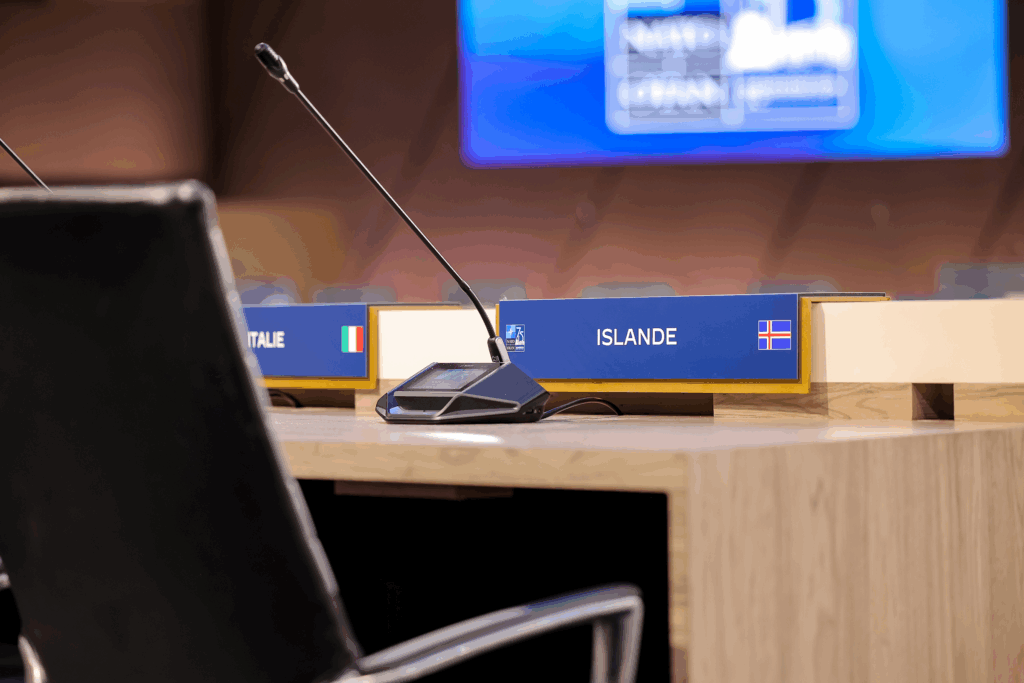
PRESS-URE FOR SUCCESS
The complexity behind a successful media center isn’t just about having the right equipment — it’s about orchestrating countless moving parts so seamlessly that they become invisible to the end user. When the spotlight turns on and the cameras start rolling, there are no second chances to get it right.
Ready to elevate your next event?
